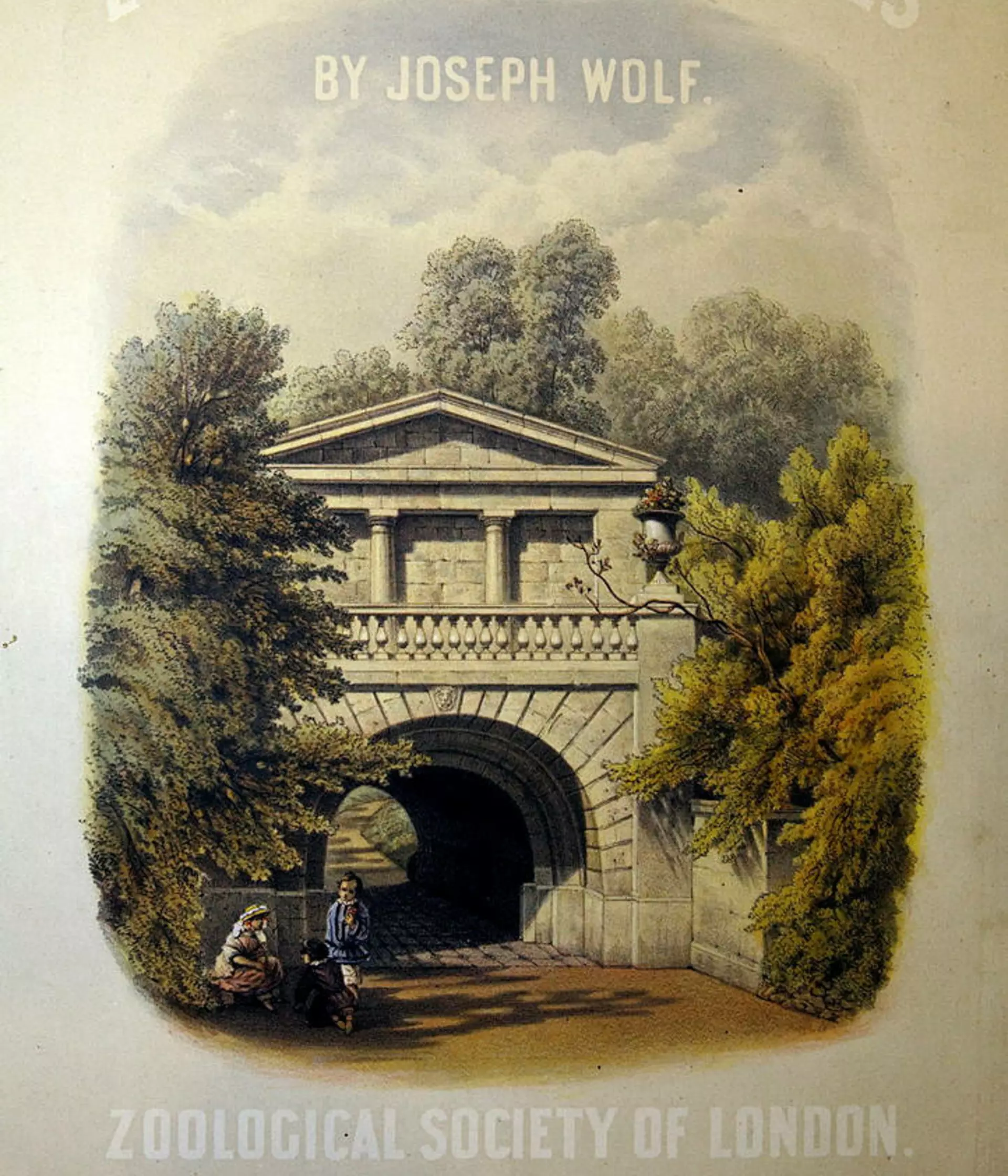One of the oldest surviving features of London Zoo, the East Tunnel was a vital link between the north and south sections of the growing zoological gardens.
The East Tunnel was designed by London Zoo’s first architect, Decimus Burton, to connect up ZSL’s land on either side of the Outer Circle road in Regent’s Park. Burton was a leading Victorian architect, who also designed the grand entrance screen to Hyde Park at Hyde Park Corner, and made renovations to Buckingham Palace.
Plans for the East Tunnel, and a £1,005 estimate for the works, were approved in September 1829. The tunnel was completed the following year.
Designing the East Tunnel
Unlike the (rather rustic-looking) early animal houses designed by Burton, such as the London Zoo Llama House , the East Tunnel was built in a classical style, with elegant entrance portals and balustraded parapets. It more closely follows the imposing architecture of John Nash seen elsewhere in Regent’s Park than any other Zoo building. Decimus Burton’s father, James Burton, had previously worked with Nash to build the latter’s designs for Regent Street and Regent’s Park.
London Zoo war effort
The East Tunnel was one of several areas of London Zoo that served as air raid shelters for employees and local people during World War II. Once the all-clear was given, wardens would first patrol the Zoo to make sure no dangerous animals had escaped, before people were allowed out.
In morale-boosting news footage from the period, one of the Zoo’s chimpanzees, George, was filmed helping to pile up the sandbags that were used to bolster defences!
East Tunnel today at London Zoo
The East Tunnel remains a vital connection for getting around the Zoo, and retains its original southern entrance portal. It is often used for exhibitions and displays.
Although the original northern entrance of the East Tunnel has been covered by more modern buildings, this area has been livened up with a series of colourful animal murals by artist Louis Masai. The murals were added in 2018 to raise awareness of animals ZSL has identified as EDGE species (Evolutionarily Distinct and Globally Endangered), and include a pygmy three-toed sloth, a Lake Oku clawed frog and a Philippine eagle.
